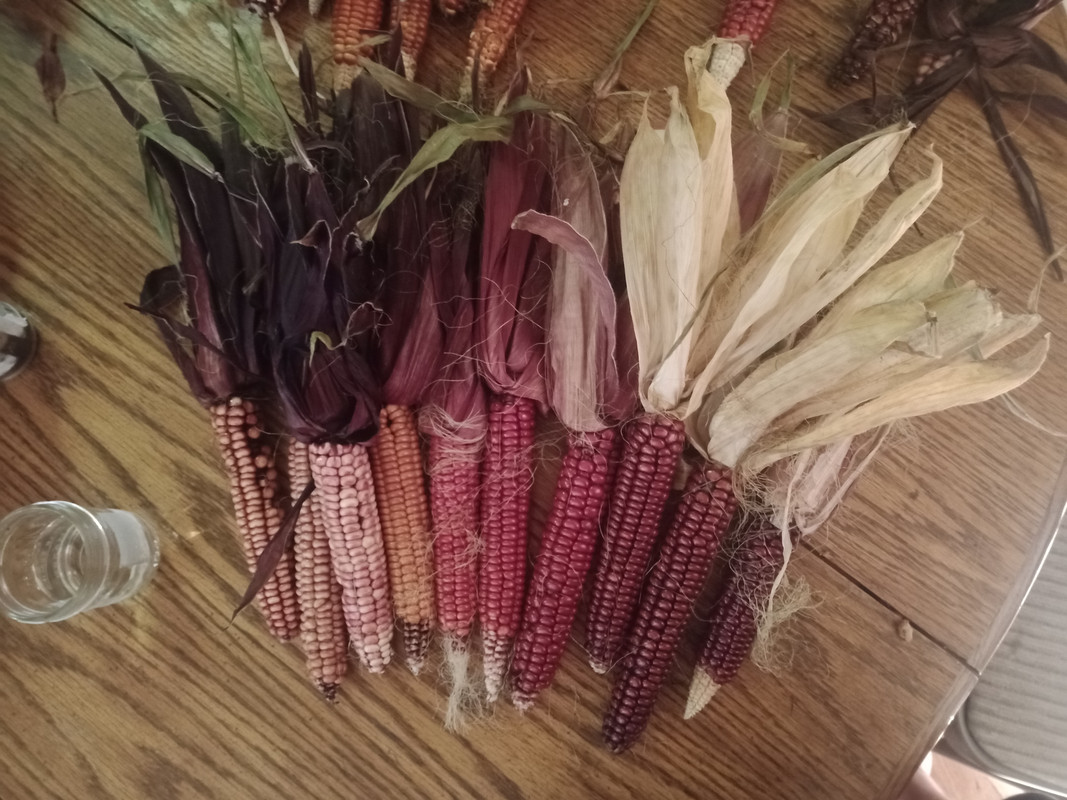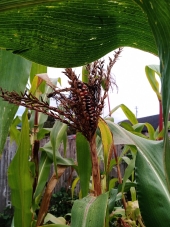After 4 years of desperately keeping any kernel that would finish in my cool damp coastal climate I finally am going to have enough of a harvest this year to eat some and to start thinking about splitting off varieties.
My goals are;
1. A good variety for making tortillas, I eat a lot of tacos
2. A good variety for making polenta, my wife and son love polenta and we eat it at least once a week
3. A mix of colors, cause they're pretty and almost certainly each color offers different energies and nutrients to us
So, my current plan is to separate the corn into early and late harvest cobs. Then separate those two categories into different color groups.

This is the early harvest and I am thinking it will be 4 different colors;
1.white
2.yellow/orange
3.red
4.dark red/purple
I'm hoping I'll have a similar spread of colors from the late harvest, and maybe even some blue in there. So that will give me my 8 "types". Now the question is how to plant them next year? My first thought was in rows by colors (I like to plant double rows with a bean in between) with the later stuff on the north side of the garden. But then I thought that maybe I should make blocks of colors with rows of late and early within each color block?

There's also the question of identifying other physiological traits I might want, you can see the broad variety in foliage color in the above picture and there are height and cob size variations that are just as wide.
How worth it is trying to identify specific plants I really like or rogue real duds from the seed supply going forward?
Appreciate any thoughts, experiences, advice, wild ass guesses, or unrelated stories. Happy autumn










